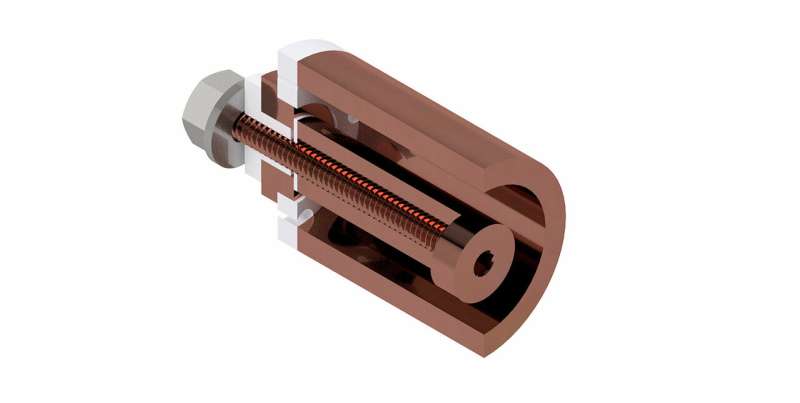This rendering depicts a device that electromagnetically accelerates plasma to produce thrust - contrasting typical chemical thrusters. In order to create the propellant plasma, a low energy surface flashover (LESF) technique is employed at the beginning of the channel. Credit: Rendering provided
CubeSats have become big players in space exploration. Their small size and relatively low cost have made them popular choices for commercial launches in recent years, but the process to propel such satellites in space comes with a number of problems.
Now, Purdue University researchers have developed a technology to address one of those key problems—the uncertainty of the ignition system that initiates the propulsion system of the CubeSats. Current ignition systems are unreliable and can be subject to significant and irreversible damage during the lifespan of the satellite.
"We have created a lower energy triggering technology that uses nanosecond-long pulses, that allows the ignition and propulsion systems to function reliably for a very long time," said Alexey Shashurin, an assistant professor of aeronautics and astronautics in Purdue's College of Engineering. "Specifically, we have successfully tested the ignition system for greater than 1.5 million pulses and it remained operational and almost intact after the test. This is a giant leap for extending the lifetime of electric propulsion systems for CubeSats."
Overall popularity of the CubeSats is heavily driven by the great advancement in miniaturization of electronic components and sensors that allows for new kinds of space missions and measurements using a CubeSat.
"It is exciting to tackle these new challenges presented on spacecraft of a much smaller scale than in previous years," Shashurin said. "The next step for the CubeSats is to have a robust propulsion system for necessary maneuvering and station-keeping duties."
Shashurin and his team worked with the Purdue Office of Technology Commercialization to file a provisional patent on the technology.
The work was published in the Jan. 10 edition of Plasma Research Express. It was also presented during the American Institute of Aeronautics and Astronautics SciTech Forum last month in San Diego.
The team is planning to participate in the National Science Foundation's I-Corps program, which provides support for conducting extensive customer discovery with an ultimate goal to find industrial partners and commercialize the technology.
More information: Yunping Zhang et al. Low energy surface flashover for initiation of electric propulsion devices, Plasma Research Express (2019). DOI: 10.1088/2516-1067/aaf659
Provided by Purdue University
























